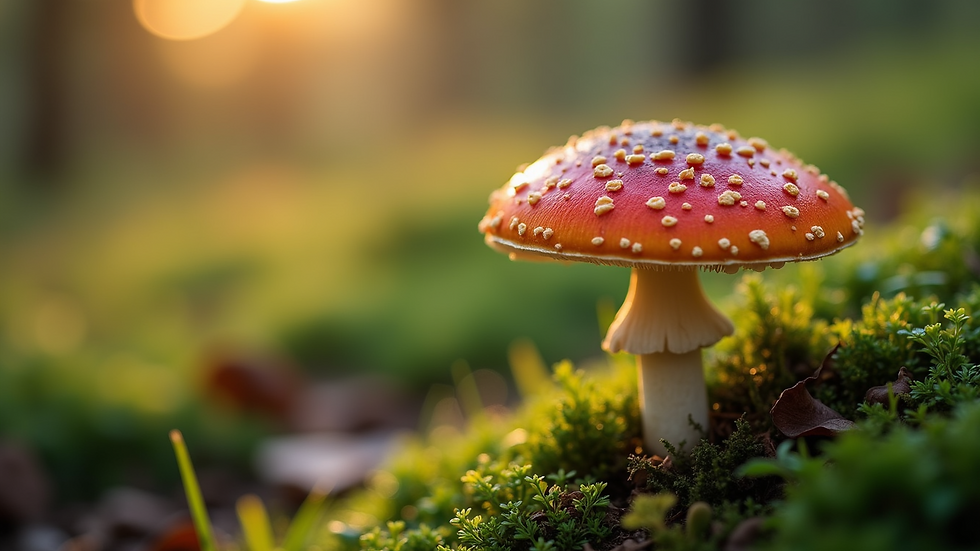Exploring Religious Freedoms for Entheogenic Communities
- Jenna Lake
- Jul 17
- 4 min read
Updated: Oct 17
In recent years, the increased interest in entheogenic substances has brought about significant discussions regarding their use in spiritual and religious practices. Many communities are advocating for their rights to express their beliefs freely, which includes the use of these substances as part of their religious ceremonies. This blog explores the concept of religious freedoms, specifically as they relate to entheogenic communities.
Understanding Religious Freedoms
Religious freedom is the principle that individuals should be able to practice their religion without interference from the government. This freedom encompasses not only the right to worship but also the right to express one's beliefs through actions. In many countries, religious freedoms are protected by law. However, the rise of alternative spiritual movements, particularly those integrating entheogenic substances, poses modern challenges to these legislative frameworks.
Current legal landscape
In the United States, the First Amendment protects religious freedoms; however, this protection can be complicated when substances are involved. Laws regarding drugs and their religious use often clash, leading to arrests and legal disputes. Notably, some courts have ruled in favor of entheogenic practices, supporting the idea that individuals should be allowed to incorporate these substances into their spiritual rituals.

The Impact of Entheogens on Spiritual Practices
Entheogens are substances that are used in a spiritual context to create experiences that are believed to enhance one’s connection with a higher power. Traditional entheogenic practices have been around for centuries and are utilized by various cultures around the world. They serve as tools for personal insight, healing, and connection to the divine.
Shift in perception over time
Historically, entheogenic substances were considered sacred and were integral to many indigenous practices. However, with the advent of modern drug laws, societal views have shifted dramatically. The demonization of these substances has been pervasive, often overshadowing their historical significance. As more research emerges suggesting the therapeutic and spiritual benefits of such substances, communities argue for their rights to practice without fear of legal repercussions.

What is an example of an entheogen?
A well-known example of an entheogen is the psilocybin mushroom, commonly referred to as magic mushrooms. These mushrooms have been used for thousands of years in various cultures for their mind-altering properties. They produce profound changes in perception, mood, and thought processes, making them a popular choice for those seeking spiritual experiences.
Other examples of entheogens
In addition to psilocybin mushrooms, other examples of entheogens include ayahuasca, peyote, and the San Pedro cactus. Each of these substances has rich histories within their respective cultures and are used in sacred rituals for healing and spiritual enlightenment. The ongoing rediscovery of these practices is challenging the established narratives around drug use, pushing for the recognition of their cultural significance.
Advocating for Change
As the conversation surrounding entheogens continues to evolve, communities are starting to take action. Advocacy efforts are focused on legal recognition and protection for those who engage in these ancient practices. The goal is to ensure that entheogenic use is acknowledged as a legitimate aspect of religious expression.
Legal battles and successes
Organizations and individual advocates have fought numerous legal battles to reclaim their rights. Some jurisdictions have begun decriminalizing certain entheogens, allowing for their use in designated settings such as religious ceremonies. For instance, in recent years, cities in the U.S., like Denver and Oakland, have effectively decriminalized psilocybin mushrooms, setting a precedent for further legal changes.

Future Prospects for Entheogenic Communities
Looking ahead, the landscape for entheogenic communities seems to be shifting. With increased public interest and scientific research into the benefits of entheogens, there are hopeful signs for greater acceptance.
Building community resilience
As these communities grow, they can become instrumental in advocating for their rights. They can work with legal professionals and lawmakers to create regulations that support their practices while ensuring safety for participants. Initiatives such as educational courses can also empower communities by providing knowledge about legal rights, safe practices, and the cultural significance of their rituals.
One such resource can be found at the entheogen church, which offers courses on the legal landscape and the integration of entheogens into spiritual practices. Community education will nurture informed participants who can navigate the complexities of legality and spirituality.
The Intersection of Faith and Science
As entheogenic practices gain traction, an interesting intersection is developing between science and faith. Research into the effects of entheogens on mental health, spirituality, and societal well-being is burgeoning. Studies suggest that certain entheogens can foster a sense of connection, reduce anxiety and depression, and even enhance overall personal well-being.
Collaboration with researchers
Many entheogenic communities are engaging with researchers to document their experiences and the benefits of these substances. This collaboration will be crucial in advocating for legal changes, as empirical evidence can shift public perception and policy decisions. By presenting a united front that combines faith and science, entheogenic communities can forge pathways toward recognition and protection.
Embracing the Journey
Ultimately, the journey toward religious freedoms for entheogenic communities is both complex and dynamic. As more people recognize the importance of spiritual expression and the integral role of significantly cultural practices, the conversation will continue to evolve.
Encouraging open dialogue
Engaging in open dialogue about the benefits and challenges of entheogenic practices can foster understanding and acceptance. Education is vital, not only within the community but also with the broader public. Workshops, discussions, and information sessions can bridge the gap between traditional views of drug use and the reality of religious expression.
As communities push for recognition and respect, a larger cultural shift may be on the horizon—one that embraces diversity in both spiritual expression and the use of entheogens in those practices.
In summary, exploring religious freedoms for entheogenic communities encapsulates a broader quest for understanding, acceptance, and the right to practice one's beliefs. As society advances, so too must the frameworks that govern religious expression, paving the way for acceptance of diverse spiritual practices.
.png)



Comments